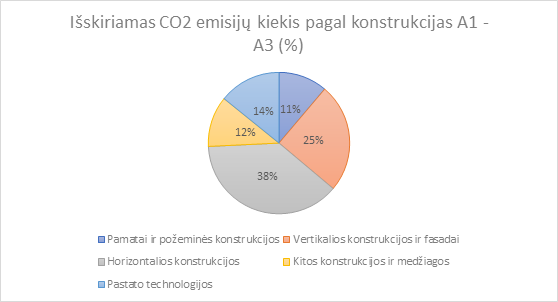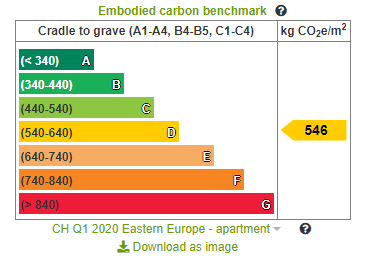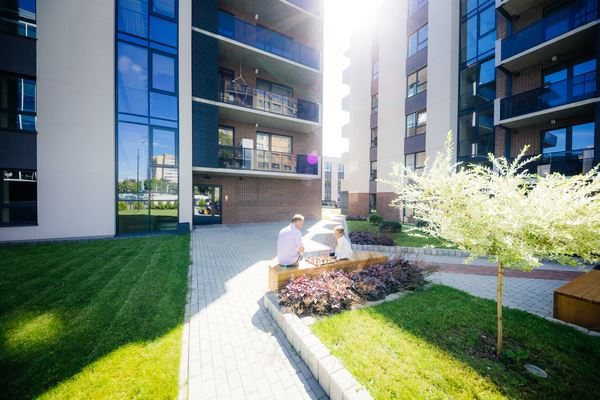YIT Lietuva begins construction of new logistics building in Kaunas
Select services
Europe is aiming to become a climate-neutral continent by 2050, as set out in the Green Course, and business is increasingly seeking to contribute to this goal. The contribution of the construction sector is becoming particularly important. It is estimated that namely the latter is responsible for around 38% of global CO2 emissions. As a result, the sustainable urban development and construction company “YIT Lietuva”, together with the entire YIT Corporation, seeks positive changes starting from itself. The group has set itself the goal of reducing the CO2 emissions of its operations at least by half by 2030.
Calculates the CO2 footprint of projects
According to Kęstutis Vanagas, general manager of “YIT Lietuva”, in order to achieve this, it is firstly important to assess how much greenhouse gas is emitted into the atmosphere during the construction and operation of new buildings and which processes account for the largest share. Therefore, when implementing new projects, the company has been calculating the CO2 footprint of buildings for some time now.
“The climate change situation is becoming increasingly threatening, and in order to prevent an ecological catastrophe and to protect the planet, its biodiversity and a favourable living environment for future generations, it is important for everyone to make an effort – and to do it now. Sustainable activities have always been one of the most important priorities for YIT companies, therefore we consistently strive to assess our impact on the environment and reduce it,” says K. Vanagas.
Uses new competencies for calculations
According to him, the assessment of CO2 emissions from the construction and future operation of the building is currently being carried out in the implementation of all housing projects of the company. Such calculations are also provided for the construction of commercial buildings and the implementation of infrastructure projects. Methodologies are already being developed and pilot calculations are being carried out thereto.
“CO2 emission calculations are performed in three stages of the project – construction planning, design, and construction works. Such calculations first of all require some basic information – the purpose of the building, the height, the expected architectural, constructional and engineering solutions. Detailed calculations are then performed using special digital construction models. Finally, energy modelling information is required to complete the calculations – the annual electricity and heat energy consumption of the building is forecasted. This stage is the most difficult so far,” tells K. Vanagas.
According to the representative of the developers, in order to perform such calculations, additional competencies are required – not only engineering knowledge, but also data analysis skills, good knowledge of BIM models and CO2 calculation methodologies. As stated by K. Vanagas, the employees of the company are specially trained for this. In his view, such competencies in the construction sector will become increasingly important.
Looking for more sustainable solutions
Calculations performed by “YIT Lietuva” show that energy-intensive building materials account for the largest share of CO2 emissions of a building. Materials such as concrete, as well as reinforcement and other metal structures are particularly energy-intensive. These key construction materials are estimated to account for up to 35% of all CO2 emissions from all materials used for construction.
“So far, we have calculated the CO2 emissions of ten buildings. When analysing the information on the CO2 footprint of projects, we try to see certain trends – which solutions and processes determine the most greenhouse gases, and which are more efficient in this respect. For example, we see that emissions are higher in projects where production processes are carried out on site. In factories, processes are more optimized, so they use less energy compared to work on construction sites,” says K. Vanagas.
According to him, it is also noticeable that higher CO2 emissions are emitted when more monolithic reinforced concrete works are carried out during construction. As claimed by the head of “YIT Lietuva”, the assessment of such tendencies allows choosing the most environmentally friendly solutions and materials when planning future projects.
“First of all, we aim to reduce CO2 emissions by looking for more efficient design solutions. By choosing more sustainable solutions at the planning stage, emissions can be reduced in the later stages of project implementation. We are also looking for opportunities to use lower-emission materials in construction. Furthermore, we aim to assess the possibility of using secondary materials for certain elements of the building,” says K. Vanagas.
Promotes more sustainable practices in the sector
By the way, he notes that the company can make a significant impact on the final CO2 footprint of a building only by implementing its own projects and not those developed according to the needs of customers. Then, already in the early stages of the project, it is possible to plan the future result, optimize the design solutions, and apply CO2 reduction measures on the construction sites during the construction phase.
“In projects where we participate as a general contractor, we do not have such an influence, because the choice of many solutions and materials is decided by the customer. Even so, our aim is to start with ourselves first and to set an example by promoting more sustainable practices across the sector. I am sure that our efforts will yield tangible results over the next ten years,” says K. Vanagas.


